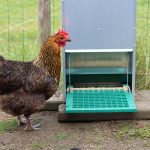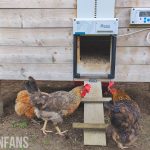How Many Nesting Boxes Per Chicken? (+Calculator)
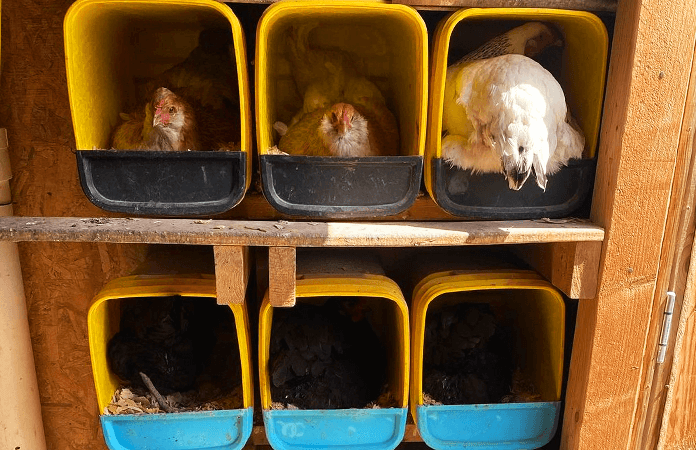
Let’s face it, most of us keep chickens for their delicious eggs that cover our daily breakfast needs. So let’s assume you have more than one or two hens in your flock. They need to be comfortable and at ease, especially when laying eggs. How many nesting boxes should you provide? Let’s find out.
How many nesting boxes to have per chicken?
A rule of thumb is to provide one nesting box for every three to four hens. As a bare minimum, place at least two nesting boxes when keeping more than one hen, as they often lay at the same time. You have more flexibility for larger flocks and can go for one box for every six chickens.
| Number of chickens (hens) | Amount of nesting boxes |
| 1 – 3 | 1 (preferably 2 if you have the space) |
| 4 | 1 – 2 |
| 5 – 6 | 2 |
| 7 – 8 | 2 – 3 |
| 9 | 3 |
| 10 – 12 | 3 – 4 |
| 13 – 15 | 4 – 5 |
| 16 | 4 – 6 |
| 17 – 18 | 5 – 6 |
| 19 – 20 | 5 -7 |
| 21 | 6 – 7 |
| 22 – 24 | 6 – 8 |
| 25 | 7 – 9 |
| … More | Minimum 10 |
The number of nesting boxes varies depending on the breeds you keep. Not all breeds tend to lay every day or even every other day. Check out our ‘Breed Guide‘ to check what breeds are more likely to lay often than others.
If you want to do the nesting box math, use our nesting box calculator.
why do hens share a nesting box?
Although all hens love their privacy when laying eggs, they don’t seem to mind sharing a nesting box occasionally. Especially when having a favorite nesting box, they don’t feel comfortable laying somewhere else if the preferred box is unavailable.
So there is absolutely no need to increase the number of nesting boxes when you notice all hens are using the same box. They prefer one nesting box; no matter how many boxes are available, they’ll keep using just one.
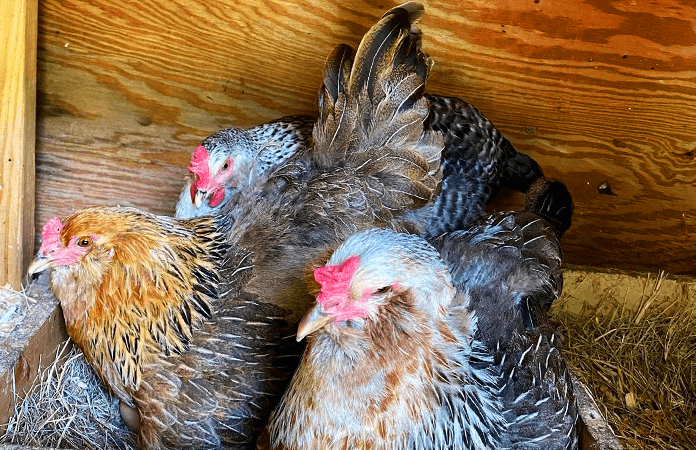
Does every hen need its own nesting box?
No. Installing one nesting box per chicken is unnecessary, as they won’t lay all at the same time or on the same day. Chickens often share a favorite nesting box, so they’ll queue up and wait until their preferred nesting box is available rather than choosing an available box.
How to train your hens to use the nesting box?
Young laying hens won’t always start to lay in the nesting boxes automatically. They lay anywhere they want to, outside in the sand, inside the coop, under the bushes,… To prevent cracked or dirty eggs, and because it’s easier to collect all eggs in one place, it’s best to train your hens to only lay in the nesting box immediately once they start laying.
Instinctively, hens lay eggs in a safe and secluded environment, so make sure your nesting boxes live up to these standards.
A couple of helpful tips to keep in mind:
- Darkness. Hens prefer darker places to lay eggs. Create an environment with less light by covering the nesting box or by using nesting box curtains.
- Fake eggs. Place a golf ball or a hard-boiled egg in the nesting box to encourage laying in the recommended spot.
- No free ranging. Don’t let your hens free-range until all start laying inside the nesting boxes.
- Block access to any unwanted places they tend to lay. This can be a temporary measure until they get the hang of it.
- Be patient. They’ll figure it out!
Chicken nesting box requirements
Next to the number of nesting boxes to provide for your hens, size requirements and nesting box bedding are major topics to consider.
What size should a chicken’s nesting box be?
The nesting box size depends on the size of your chickens. But for normal-sized chickens, the most followed guideline is 12″x12″x12″ inch. Bantams, Silkies or other small chicken breeds can have smaller boxes, but large breeds like Orpingtons need bigger nesting boxes, especially in height. Therefore, a guideline of 14″x14″x14″ is better to keep in mind when planning to keep various breeds.
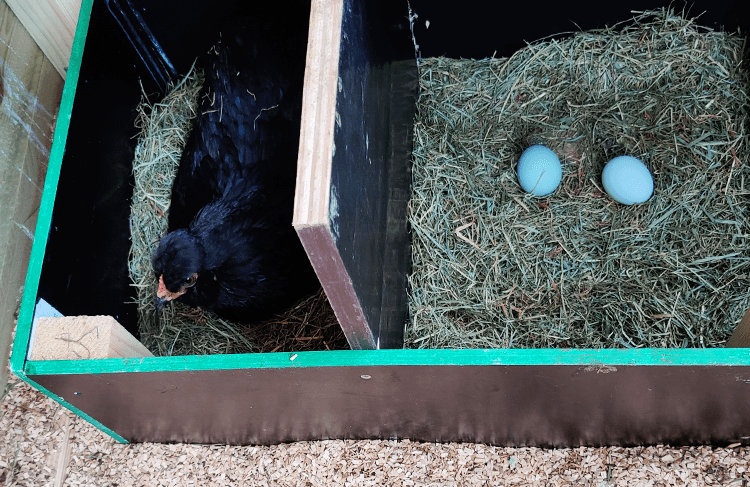
However, a 12 to 14-inch height seems rather small for some chicken keepers, especially when having larger chickens. If that is the case in your backyard flock, consider increasing the height up to 20 inches.
Not covering the nesting box at all is another option you can keep in mind. But truth be told, hens like a secluded place to lay eggs. Therefore, a covered nesting box makes them feel safe, and you can even add nesting box curtains to complete their privacy feel.
What’s the best bedding for a nesting box?
There are various types of bedding material on the market, so you can choose whatever you and your hens prefer. The most common types of bedding materials inside a nesting box are:
- Wood shavings
- Hay
- Straw
- Grass clippings
- Nesting box pads
If you want to learn more about these different types of bedding materials, check out our ‘Best chicken nesting box bedding‘-guide or go to our favorite bedding article, ‘All about chicken nesting box pads‘.
Summary
The number of nesting boxes to have depends on the number of chickens you want to keep. As a ground rule, one nesting box per three to four hens is recommended. But you have more flexibility for larger flocks and can go for one box for every six chickens. Not every hen needs its own nesting box, and they’ll happily share a nesting box.
Credits featured image: @thecrowdedhomestead (IG)

